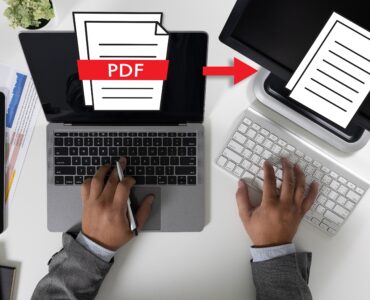by David Grunwald
We received this email today which I would like to share with you:
X-doc.ai currently serves one of the toughest jobs in translation: high-precision FDA regulatory submissions for pharmaceutical giants like our clients Bristol Myers Squibb, Johnson & Johnson, and Bayer.Now our AI platform has started to empower translation teams, similar to Global Translation Services, to 3x their productivity. Just last week, a translation company used it to translate 0.7M+ words in 2 day.They didn’t scale up their team. They used our AI platform to:
This company boasts of a 3x productivity gain—but in reality, the leap looks closer to 50–60x.
Under the Hood: What X-doc.ai Is Really Offering
The claims may sound like marketing hype—but technically, they are not impossible. X-doc.ai appears to combine three things:
- Domain-trained AI translation engines that have been optimized for highly technical language (like FDA regulatory filings).
- Automated typesetting and layout tools that handle PDFs, tables, and graphics with minimal manual DTP.
- A human-in-the-loop step, where linguists review the AI output rather than translating from scratch.
This workflow mirrors what is happening across the industry. Platforms like DeepL, Google, and Microsoft Azure already offer document-level translation with glossary support and layout preservation. The difference is that X-doc.ai has targeted regulated industries and claims to be FDA-submission ready. If true, this puts them one step ahead of the “generic” MT engines.
The Harsh Reality for Human Translators
Let’s put the numbers in perspective.
- Traditional model: To translate 700,000 words in 2 days, you would need 100+ linguists working in parallel. Even then, the coordination, consistency, and quality control would be a nightmare.
- AI model: The same volume is processed automatically, with a handful of human reviewers polishing the output.
For every 100 translators needed before, you might now need only 2–3 reviewers. So the question is unavoidable:
- If AI can handle both speed and accuracy at scale, how many human translators will still be needed?
- Are translators destined to become reviewers, or worse, redundant?
The Translator’s Dilemma
For decades, professional translators have relied on technology—CAT tools, translation memories, termbases—to boost productivity. But this is different. This is not incremental; it’s disruptive.
If you’re a translator, you’re facing three possible futures:
- Adapt: Move into post-editing, quality assurance, or domain specialization (where human oversight is non-negotiable).
- Elevate: Focus on high-value consulting—terminology management, regulatory compliance, or cultural adaptation.
- Exit: Many will find that the economics no longer support full-time work in translation.
The Inevitable Shift
Is this the end of translation as a profession? Not entirely. But it is the end of translation as we knew it. The demand for linguists will not disappear—but it will shrink, and the work will change.
Instead of 120 translators working on a massive job, a company might only need 5. Instead of weeks of effort, projects will be measured in hours. And instead of human pride in “crafting” translations, the role will shift to verifying, correcting, and signing off on machine work.
The industry is at an inflection point. AI isn’t coming for translators—it’s already here. The only question is who adapts, and who gets left behind.
The Pricing Earthquake
On the Buyer Side: Translation as a Commodity
For decades, translation pricing has hovered around $0.10–$0.15 per word for professional services in technical and regulated industries. Big clients have tolerated high per-word translation rates, not because they liked paying them, but because there was no other way to get huge jobs done — you can’t infinitely scale with humans alone. But what happens when AI can deliver 700,000 words at 99% accuracy in 48 hours?
Buyers are quick to do the math:
- Why should they pay $120,000 for 1 million words when AI can deliver it for $30,000 or less?
- Why accept weeks of turnaround when the same result can be had in days?
- Why tolerate “capacity limits” when AI has none?
The expectation shifts instantly: translation is no longer an artisanal craft but a utility service, priced and consumed like cloud storage or compute cycles.
This creates a race-to-the-bottom in pricing. Buyers will increasingly benchmark LSP quotes against AI throughput, forcing vendors to slash per-word rates or switch to hourly “review” pricing.
On the Seller Side: LSPs Are Squeezed
For language service providers, this is both opportunity and existential threat.
-
Opportunity: LSPs that embrace AI can deliver more volume at higher margins, winning larger contracts by offering speed and cost savings. A $100,000 project that used to consume 80% of budget in linguist pay can now be fulfilled for $30,000 in linguist effort — while still charging $70,000.
-
Threat: The more transparent AI pricing becomes, the more buyers will push margins down. If clients know the AI does 90% of the work, they won’t pay traditional per-word prices. LSPs risk being disintermediated unless they prove added value: compliance guarantees, secure workflows, certified QA, integration with buyer systems.
We may see a split: a handful of super-LSPs scaling with AI, and a long tail of agencies and freelancers squeezed out.
For Translators: A Shrinking Pie
Translators sit at the end of this value chain — and they will feel the sharpest pain.
- Fewer hands needed: Where 120 translators were once required, 5 reviewers may now suffice.
- Rate compression: Post-editing rates are already 30–50% lower than translation rates. With AI output improving, buyers question why even that premium is needed.
- Precarious demand: Only subject-matter experts in high-stakes fields (pharma, legal, financial compliance) will command sustainable rates. For the rest, the work risks collapsing into gig-economy wages.
The brutal truth: the average per-word income for translators will continue to fall, possibly below living-wage thresholds in many markets.
The New Economics of Translation
Here’s how the numbers may shake out in the next few years:
- Before AI: $0.12 per word × 1M words = $120,000
- With AI + human review: $0.03–0.05 per word effective cost = $30,000–$50,000
- AI-only (no review): <$0.01 per word equivalent
The buyer sees a 75%+ cost reduction.
The LSP sees a margin expansion (if they control the workflow).
The translator sees 50%–70% lower pay, with fewer total projects available.
This is the asymmetry of disruption: the savings accrue to buyers and tech-enabled LSPs, while translators bear the brunt of commoditization.
Where Does It Go from Here?
- Buyers will normalize AI-based pricing models, pushing for subscription or volume-based deals instead of per-word contracts.
- LSPs that reinvent themselves as compliance partners (not just “translation vendors”) will thrive — selling risk mitigation, certification, and integration as their true product.
- Translators must either specialize (niche industries, cultural adaptation, high-liability content) or transition into roles like QA, terminology management, or localization engineering.
The rest? They risk obsolescence.
The Provocative Conclusion
The economics are clear: AI doesn’t just improve productivity — it rewrites the pricing model. What cost $120,000 yesterday can be delivered tomorrow for $30,000. What needed 120 translators now needs 5.
That’s not “productivity improvement.” That’s disruption.
So the uncomfortable question remains: In a world where AI translates millions of words overnight at 99% accuracy, are human translators still needed — or are they already obsolete?
Full Circle Moment
I wrote over a decade ago on Kevin Lossner’s blog that translation was becoming a commodity — and translators pushed back. Many argued it was an art form, irreplaceable by technology. But AI has proven them wrong. The real question isn’t whether translation is a commodity, but whether it’s on its way to becoming a utility.
Data Speaks: Empirical Evidence Behind the “Pricing Earthquake”
- Translators report lost work and falling income.
A 2024 Society of Authors survey reported by The Guardian found that over one-third of translators have already lost work to AI, and more than 75% expect income reductions.
The Financial Times likewise reports 36% lost work, 77% foresee falling incomes. - Translator sentiment and post-editing rates.
An Acolad survey (2025) shows 84% of translators expect lower demand for human translation,
with MT post-editing discounts ranging from 10–50%.
Read more. - Machine translation market growth.
Industry forecasts project MT growing from $678M in 2024 to nearly $995M by 2032,
with MTPE workflows delivering 30–50% cost reductions and up to 63% faster editing.
See industry trends. - ROI for AI translation tools.
A study of enterprise DeepL usage reported a 90% reduction in document translation time,
a 345% ROI over three years, and £2.8M in efficiency gains.
Read the report. - Productivity boost from AI-assisted translation.
Research with 300 professional translators showed larger models improved speed by 12.3%,
quality by 0.18 SD, and earnings/minute by 16.1%.
View study. - Human-machine collaboration cuts cost.
A 2024 study found hybrid workflows matched or exceeded human-only quality
at ~60% of the cost.
Read the paper. - Language services market slowdown.
Nimdzi’s 2025 report estimates the industry at $75.7B, still growing but at a slower CAGR (~5% vs. 7% pre-AI),
reflecting disruption dynamics.
See Nimdzi 100. - Machine translation adoption reduces translator job growth.
A CEPR/VoxEU analysis (2025) finds that each 1-pp increase in MT usage is associated with a ~0.7-pp drop in translator employment growth, implying ~28,000 fewer US translator jobs created (2010–2023).
Read the study





